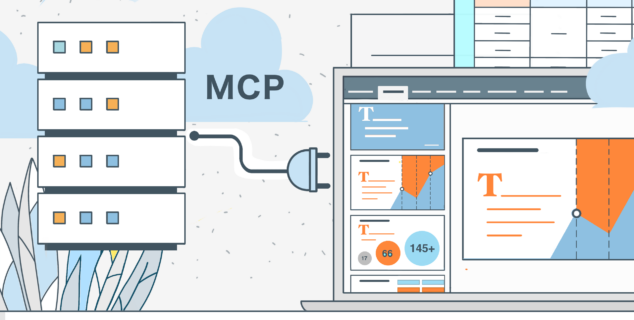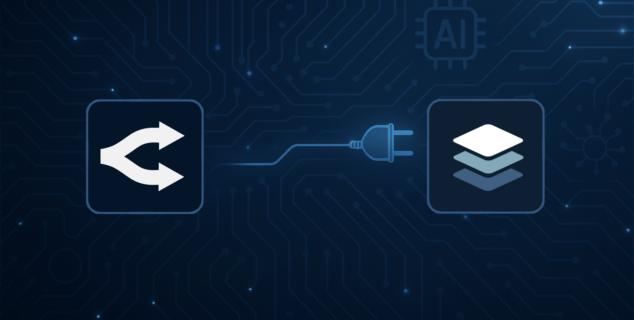AI trends to watch out for in 2025
Innovations in artificial intelligence have led to it becoming an integral part of society and finding applications in a variety of fields. In this article, we look at the expected trends in artificial intelligence that will dominate in 2025. Discover the future landscape of artificial intelligence and consider the profound impact these advances could have on our daily lives, industries, and the global technology ecosystem.

1. Generative AI
Generative AI refers to a category of artificial intelligence techniques and models that are designed to generate new, often realistic, data samples. Instead of being explicitly programmed to perform a specific task, generative AI models are trained on large datasets and learn to generate new content by capturing patterns and structures present in the training data.
Generative AI has applications across various domains, including image generation, text generation, data augmentation, creative arts, etc.
In 2025, generative models are expected to produce content with even greater realism and fidelity. This could lead to advancements in generating high-resolution images, realistic simulations, and immersive experiences in virtual environments.
Perhaps the best results have been achieved by generative AIs that work with texts. The trend set by ChatGPT in human-like content generation has been embraced by numerous emerging AI models. Examples include DeepSeek, Groq, Ollama, and others which focus on speed, efficiency, and domain-specific applications. Additionally, another significant trend has emerged in response to concerns about transparency and data security—the rise of open-source AI models. Solutions such as Mistral AI offer alternatives that prioritize control, customizability, and security, allowing businesses to integrate AI while maintaining greater oversight of their data.
AI has become so popular that many solutions integrate it to provide a better user experience. Into various programs for generating, analyzing, translating, and other language-processing tasks. For example, AI-powered assistants are now available in ONLYOFFICE Docs.
The combination of office suite and generative AI helps you create and edit texts by performing tasks such as writing and summarizing, generating illustrations, translating and analyzing words, finding keywords, and giving word definitions. In addition, this integration allows different AI models to be configured to perform different tasks based on their capabilities and specialization.
2. AI Chatbots
The use of AI chatbots is expected to evolve significantly in the future, with advancements in natural language processing, machine learning, and conversational AI technologies.
In 2025, AI-enabled chatbots are likely to offer more sophisticated customer support, providing instant responses to queries, solving complex problems, and handling a wider range of requests. Integration with knowledge bases and data analytics will expand their ability to provide personalized assistance.
3. Use of Predictive Analytics
Analytics generated by AI is expected to revolutionize various industries. With advancements in technology and an abundance of data, companies will be able to make more informed decisions and optimize their operations. Predictive analytics will enable businesses to forecast future trends, identify potential risks, and personalize their offerings to meet the specific needs of customers. This will lead to increased efficiency, cost savings, and ultimately, a competitive advantage in the market.
In finance, predictive analytics can be used for forecasting stock prices, identifying investment opportunities, and managing financial risks. It aids in making data-driven decisions related to investment strategies and portfolio management.

4. Multi-functional Artificial Intelligence
Multifunctional AI refers to AI systems or models that are designed to perform different tasks and functions in different domains. Developing multifunctional AI often involves integrating different AI methods and models to create a comprehensive and adaptable solution. They can utilize text, speech, images, video, audio.
Enterprises can use multimodal AI to create intelligent systems that analyze different data streams, enhancing natural language understanding, visual perception, and voice recognition to improve the user experience.
5. AI Cybersecurity
As cyber threats evolve, AI will play a critical role in making cybersecurity measures more effective. AI algorithms will help detect and respond to cyber threats in real time, providing better protection for digital systems and networks.
In addition, AI can analyze vast amounts of data and identify patterns that humans may not notice, allowing potential attacks to be pre-empted. By constantly learning new threats and adapting its algorithms, AI can stay one step ahead of cybercriminals and prevent hacks before they occur. In addition, AI-powered systems can automate routine security tasks, freeing up specialists to focus on more complex issues and strategic planning.

6. Ready-made AI-generated code models
AI-generated code models refer to machine learning models and algorithms that are designed to automatically generate or assist in the generation of computer code.
Some AI models are trained to understand natural language descriptions of programming tasks and generate corresponding code. This is particularly useful for users who may not have extensive programming experience but can articulate their requirements in plain language.
Besides, AI-generated models can assist in refactoring code by suggesting improvements for code readability, performance optimization, or adherence to coding standards.
This AI trend allows companies to program AI tools personalized for their domain, analyze data, and shape current and future processes. This will also significantly reduce project development costs.
7. Ethical AI and Responsible AI Development
Ethical AI and responsible AI development refer to the principles, practices, and guidelines that aim to ensure the development and deployment of artificial intelligence systems in a manner that aligns with moral, social, and legal considerations. As AI technologies continue to advance, there is a growing recognition of the need to address ethical issues and ensure that AI systems are developed and used responsibly.
In 2025, AI systems are expected to be more transparent and explainable. This involves providing clear explanations of how AI models make decisions, especially in critical areas such as healthcare, finance, and criminal justice. Understanding the decision-making process helps build trust and allows users to challenge or appeal decisions.
8. AI-Driven healthcare innovations
AI is transforming healthcare by enabling faster diagnoses, personalized treatment plans, and improved patient outcomes. AI-powered systems can analyze medical data, detect patterns, and assist doctors in making accurate decisions. The use of AI in medical imaging, drug discovery, and predictive healthcare will continue to expand in 2025, making healthcare more efficient and accessible.
9. Integration of AI and Internet of Things (IoT)
The combination of AI and IoT devices will enable homes and cities to become more efficient and autonomous. With AI-powered systems, IoT devices will be able to communicate and collaborate, making decisions and taking actions to optimize energy usage, manage resources, and improve overall quality of life. Smart homes will be able to anticipate and respond to residents’ needs, while smart cities will be able to efficiently manage traffic, reduce pollution, and enhance public safety. This integration will transform our living spaces and urban environments, creating a more sustainable and interconnected future.

10. AI-powered robots
AI-powered robots can automate repetitive and mundane tasks, freeing up human workers to focus on more complex and creative aspects of their jobs. This could lead to faster production cycles, improved service delivery, and overall economic growth and increased efficiency in various industries, from manufacturing to customer service.
In healthcare, AI-powered robots can perform tasks such as surgery, diagnostics, and patient care. Surgical robots, for example, can provide more precision in operations, leading to faster recovery times and reduced risk.
In education, AI-powered robots can provide personalized learning experiences and tutoring, and assist with skill development. They can adapt to individual learning styles, helping students grasp concepts more effectively.
In transport, Autonomous vehicles and drones, powered by AI, have the potential to transform transportation. This could lead to safer and more efficient commuting, reduced traffic congestion, and even changes in urban planning.
In agriculture, AI-powered robots can optimize farming practices by monitoring crops, managing irrigation, and performing other tasks autonomously. This can lead to increased yields, reduced resource usage, and more sustainable agriculture.
Despite the potential benefits, the widespread adoption of robots with artificial intelligence also raises ethical and societal concerns. Issues related to job displacement, data privacy, security, and ethical considerations in decision-making require careful consideration as these technologies become increasingly integrated into our daily lives. As technology evolves, it will be important to find a balance between taking advantage of the benefits of robots with artificial intelligence and addressing the potential problems they may bring.
11. Edge AI and decentralized processing
Edge AI shifts data processing from centralized cloud systems to local devices, enabling faster decision-making, enhanced privacy, and reduced latency. By 2025, this trend will accelerate the adoption of AI in devices like autonomous vehicles, smart wearables, and industrial sensors. For instance, real-time health diagnostics via AI-powered wearables and instant quality control in manufacturing will become mainstream. Edge AI also supports offline functionality, critical for remote areas with limited connectivity, and reduces reliance on energy-intensive cloud servers, aligning with sustainability goals.
How to get the best out of AI in 2025
To get the most out of AI in 2025, organizations need to invest in robust data infrastructure and quality data collection. This will ensure that AI algorithms have access to accurate and diverse data for training and decision-making. In addition, companies should prioritize ethical considerations, such as ensuring transparency and fairness of AI systems, to build trust among users and stakeholders. Finally, it is crucial to foster collaboration between humans and AI, as humans can provide valuable insights and context to empower AI systems.
Useful links
About AI assistant in ONLYOFFICE
Connect AI with ONLYOFFICE editors: Mistral AI / Groq / Together AI / DeepSeek / Ollama
Create your free ONLYOFFICE account
View, edit and collaborate on docs, sheets, slides, forms, and PDF files online.


